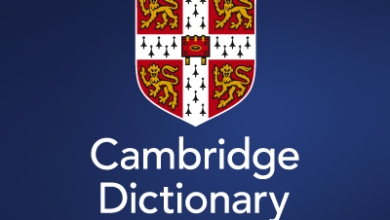What are past participles?
What Are past participles? (with Examples)
A past participle is a word that (1) is formed from a

![]() Got it? Take a quick test.
Got it? Take a quick test.
Got it? Take a quick test.
Let’s look at the verb to whisper:
- Here’s the past participle: whispered
- Here it is used as an adjective: The whispered word
- Here it is used to form a verb tense: She had whispered him the answer.
There are two types of
- The Past Participle
- The Present Participle
(Past participles usually end with “-ed,” “-d,” “-t,” “-en,” or “-n.”)
(All present participles end with “-ing.”)
Participles are
Examples of Past Participles Being Used As Adjectives
Here are some examples of past participles being used as adjectives:
The VerbThe Past Participle
To swellswollen eyes
To breakbroken plate
To ruinruined cake
More Examples of Past Participles Used as Adjectives
Here are some more examples of past participles (shaded) being used as adjectives:
- Here is a
laminated
copy to replace your
torn
one.
-
Stuffed
deer heads on walls are bad enough, but it’s worse when they have streamers in their antlers because then you know they were enjoying themselves when they were shot. (TV host Ellen DeGeneres)
- A
torn
jacket is soon mended, but hard words bruise the heart of a child. (Poet Henry Longfellow)
- Scandal is gossip
made
tedious by morality. (Poet Oscar Wilde)
- The enemy is anybody who’s going to get you
killed
, no matter which side he’s on. (Author Joseph Heller)
Past Participles in Participle Phrases
Past participles can often be found in
- The boy
taken to hospital
has recovered.
- I have a heart
wracked with sorrow
.
-
Battered by the wind
, John fell to his knees.
-
Finally broken
, Lee lowered his gloves.
(The participle phrase “taken to hospital” describes “the boy.”)
(The participle phrase “wracked with sorrow” describes “a heart.”)
(The participle phrase “”Battered by the wind” describes “john.”)
(The participle phrase “Finally broken” describes “Lee.”)
Read more about participle phrases.
Past Participles Used in Verb Tenses
As well as being used as adjectives, past participles are also used to form
More Examples of Past Participles Used in Verb Tenses
In these examples, the past participles are shaded.
- I had
crossed
the line. I was free, but there was no one to welcome me to the land of freedom. I was a stranger in a strange land. (Political activist Harriet Tubman)
- I had
seen
birth and death but had
thought
they were different. (Poet T S Eliot)
- I phoned my dad to tell him I had
stopped
smoking. He called me a quitter.
- Don’t take the wrong side of an argument just because your opponent has
taken
the right side.
- Poets have
been
mysteriously silent on the subject of cheese.
- Like all great travellers, I have
seen
more than I remember, and remember more than I have
seen
. (British Prime Minister Benjamin Disraeli)
- I have
taken
more out of alcohol than alcohol has
taken
out of me.
- By September, Jenny will have
taken
over that role.
- I hope that, when I leave this planet, I will have
touched
a few people in a positive way. (Actor Will Rothhaar)
Forming the Past Participle (Regular Verbs)
If it’s a past participle is the same as the
Add “ed” to most verbs:
- jump > jumped
- paint > painted
If a verb of one syllable ends [consonant-vowel-consonant], double the final consonant and add “ed”:
- chat > chatted
- stop > stopped
If the final consonant is “w,” “x,” or “y,” don’t double it:
- sew > sewed
- play > played
- fix > fixed
If last syllable of a longer verb is stressed and ends [consonant-vowel-consonant], double the last consonant and add “ed”:
- incur > incurred
- prefer > preferred
If the first syllable of a longer verb is stressed and the verb ends [consonant-vowel-consonant], just add “ed”:
- open > opened
- enter > entered
- swallow > swallowed
If the verb ends “e,” just add “d”:
- thrive > thrived
- guzzle > guzzled
If the verb ends [consonant + “y”], change the “y” to an “i” and add “ed”:
- cry > cried
- fry > fried
Forming the Past Participle (Irregular Verbs)
If it’s an past participle is formed in all sorts of different ways. Here are some examples:
- arise > arisen
- catch > caught
- choose > chosen
- know > known
You just have to learn them.
Read more about irregular verbs (includes a list of the most common irregular verbs).
Why Should I Care about Past Participles?
If you’re learning or teaching English, then it is essential to have a good understanding of participles (past participles and present participles) because adjectives and verb tenses are fundamental building blocks when learning a language…any language.
As a rule, native speakers are good at using participles, i.e., they do not cause too many writing errors. However, the same cannot be said for
It’s not all bad news with participle phrases. They also offer a benefit.
Here are two good reasons to think a little more about past participles (specifically, past participles in participle phrases). Let’s start with the benefit.
(Benefit 1) Use a fronted participle phrase to say two things about your subject efficiently.
Participles can be used to create a sentence structure that allows you to say two or more things about your subject efficiently. For example:
-
Imbued with both common sense and enthusiasm
, Patrick is always quick to find a cost-effective solution.
(This example features a past participle (bold) in a participle phrase (shaded).)
This structure is particularly useful when writing staff appraisals. It allows the writer to shoehorn in an extra observation about the subject in a single sentence.
Read more about the benefits of using participles on the “non-finite verbs” page.
(Trap 1) Beware misplaced modifiers and dangling modifiers!
When using the sentence structure in “Benefit 1,” writers must be careful not to write an ambiguous sentence by failing to put the participle phrase next to the word it’s modifying. For example:
-
Imbued with both common sense and enthusiasm
, senior managers routinely praise Patrick for his ability to find a cost-effective solution.

(In this example, the participle phrase (shaded) could be modifying “senior managers” instead of “Patrick.” This is called a misplaced modifier.)
A misplaced modifier makes your sentence ambiguous or wrong. You can avoid a misplaced modifier by placing your modifier next to whatever it’s modifying. Let’s fix the example.
-
Imbued with both common sense and enthusiasm
, Patrick routinely receives praise from senior managers for his ability to find a cost-effective solution.

(The participle phrase is now next to “Patrick.” The ambiguity has gone.)
Occasionally, writers create a mistake known as a
-
Imbued with both common sense and enthusiasm
, senior managers routinely offer praise for his ability to find a cost-effective solution.

(In this example, the participle phrase (shaded) has nothing to modify. “Patrick” isn’t even mentioned. This is called a dangling modifier.)
Read more about misplaced modifiers.
Read more about dangling modifiers.
Key Points
- Past and present participles are key building blocks in any language.
- Using an upfront participle phrase lets you shoehorn more information into a sentence.
- If you use an upfront participle phrase, put the word being modified next.
A Video Summary
Here is a video summarizing this lesson past participles.
A past participle is a word that (1) is formed from a verb , (2) is used as an adjective or to form verb tense , and (3) probably ends with “-ed,” “-d,” “-t,” “-en,” or “-n.” For example:Let’s look at the verbThere are two types of participles Participles are non-finite verbs . (A non-finite verb is a verb that, by itself, does not show tense. This means if you look at just a participle, you cannot tell if you’re dealing with the past tense present tense , or future tense .)Here are some examples of past participles being used as adjectives:Here are some more examples of past participles (shaded) being used as adjectives:Past participles can often be found in participle phrases . A participle phrase acts like an adjective. In the examples below, the participle phrases are shaded and the past participles are in bold:As well as being used as adjectives, past participles are also used to form verb tenses . Here are the verb tenses (past participles shaded):In these examples, the past participles are shaded.If it’s a regular verb , theis the same as the simple past tense . In other words, it is formed like this:Add “ed” to most verbs:If a verb of one syllable ends [consonant-vowel-consonant], double the final consonant and add “ed”:If the final consonant is “w,” “x,” or “y,” don’t double it:If last syllable of a longer verb is stressed and ends [consonant-vowel-consonant], double the last consonant and add “ed”:If the first syllable of a longer verb is stressed and the verb ends [consonant-vowel-consonant], just add “ed”:If the verb ends “e,” just add “d”:If the verb ends [consonant + “y”], change the “y” to an “i” and add “ed”:If it’s an irregular verb , theis formed in all sorts of different ways. Here are some examples:You just have to learn them.If you’re learning or teaching English, then it is essential to have a good understanding of participles (past participles and present participles) because adjectives and verb tenses are fundamental building blocks when learning a language…any language.As a rule, native speakers are good at using participles, i.e., they do not cause too many writing errors. However, the same cannot be said for participle phrases , which are responsible for a reasonably common error called a misplaced modifier It’s not all bad news with participle phrases. They also offer a benefit.Here are two good reasons to think a little more about past participles (specifically, past participles in participle phrases). Let’s start with the benefit.Participles can be used to create a sentence structure that allows you to say two or more things about your subject efficiently. For example:This structure is particularly useful when writing staff appraisals. It allows the writer to shoehorn in an extra observation about the subject in a single sentence.When using the sentence structure in “Benefit 1,” writers must be careful not to write an ambiguous sentence by failing to put the participle phrase next to the word it’s modifying. For example:A misplaced modifier makes your sentence ambiguous or wrong. You can avoid a misplaced modifier by placing your modifier next to whatever it’s modifying. Let’s fix the example.Occasionally, writers create a mistake known as a dangling modifier . With a dangling modifier, the word being modified isn’t present in the sentence. For example:Here is a video summarizing this lesson past participles.
Ready for the Test?
Here is a confirmatory test for this lesson.
This test can also be:
- Edited (i.e., you can delete questions and play with the order of the questions).
- Printed to create a handout.
- Sent electronically to friends or students.
Here is afor this lesson.This test can also be:
 Take a different test on past participles.
Take a different test on past participles.
Take a different test on past participles.
Bài 13: Phân từ trong tiếng Anh – Participles | HỌC247
? Tải App HOC247 cho iOS/Android: http://onelink.to/4nuchu
1. Hiện tại phân từ trong tiếng Anh Present participles [00:58]
2. Quá khứ phân từ trong tiếng Anh Past participles [08:52]Cảm ơn các em đã xem Video bài giảng Phân từ trong Tiếng Anh của Thầy Bùi Đức Tiến trong chuyên đề Từ vựng Tiếng Anh
? Học trọn khóa: http://bit.ly/luyenthiTHPTQGTAnh
Theo dõi HỌC247 tại:
? Facebook: http://bit.ly/FBHoc247
? Youtube: http://bit.ly/hoc247tv
? Website: https://hoc247.net/
? App iOS: http://bit.ly/AppHoc247iOS
? App Android: http://bit.ly/AppHoc247and
Mong được đồng hành cùng các em học sinh
Trân trọng!
© Copyright by HỌC247 ❌ Do not Reup ❌




